New perk! Get after it with local recommendations just for you. Discover nearby events, routes out your door, and hidden gems when you sign up for the Local Running Drop.
Dr. Seuss said it best in his seminal wanderlost tome, Oh, the Places You’ll Go!: “You’re off to great places, today is your day. Your mountain is waiting, so get on your way.” Your mountain is waiting, and real talk: You’ve earned an offroad adventure after so much indoor time over the last 12 months. Not only will a good (or even a bad…) trail run hopefully replenish your soul in that ever-so-Seussian way, but offroad running also gives you a serious mental boost that comes with the added benefits of some bonus fitness and technique that triathletes could really use—especially in the spring. And sure, you could just make a right turn onto the next patch of dirt you find, but we’ve got the tips and trail running gear to make an experience you’ll want to come back to time and time again.
“You will come to a place where the streets are not marked.”
You don’t have to know where you’re going when you run the trails, but not everyone loves to wander aimlessly in the mountains for hours. You may eventually become that dirt nomad who runs without a plan, but until then it pays to know your popular local routes and then branch off from there. Services like MapMyRun list often hundreds of user-generated routes, but that’s also the downside: hundreds of random routes. Instead, I prefer to use a heat-generated map system like the one on Suunto’s app. You don’t need a Suunto watch to use it; in fact you don’t even need a smartwatch at all. But Suunto’s heat-generated maps take all of their customers’ data (yes, it’s a little creepy), compile the most popular tracks and spots, and display them graphically on a map or satellite overlay. This will get you offroad routes that are most likely runnable and popular enough to make sure you’re not stranded in the wilderness alone. Pair the Suunto heat map with a smartwatch (our pick, below), and you’ll be even less likely to get lost.
“You have brains in your head. You have feet in your shoes.”
Here’s another one of those “you don’t need them, but you’ll be happy you have them” bits of advice. About 20 years ago, trail shoes were a treaded, stiff, and gray (always gray) anomaly. Only a few brands made them, and few brands made them well. Today entire brands are dedicated to trail shoes, and trail shoes can have as much cushioning, support, and technology as their sleek road cousins. Many trail shoes work well for road running, and you can find a pair of trail shoes for literally any trail condition you might encounter. While the overspecialization of trail shoes might be half marketing gimmick, half non-Thoreau-OCD-encounter-with-nature, today’s trail shoes are fantastic and versatile. You’ll get increased traction, better mud clearance, better protection on top and bottom, and an overall sense of confidence that you can tackle whatever the trail might throw at you. Maybe a pair of trail shoes isn’t your first footwear purchase, but it should be your second or third.
“And when you’re alone there’s a very good chance. You’ll meet things that scare you right out of your pants.”
Hopefully it doesn’t come to you being scared out of your new trail clothing, but it’s important to recognize that when you’re out on trails, you’re out of your normal element, and you’re generally farther from assistance. For a better sense of personal safety (which can translate to a better sense of self-reliance and then to a better sense of freedom), consider bringing some sort of pepper defense spray for either two- or four-legged dangers. We’ll give our pick below, but be sure to consider what type of wildlife (or lowlife) you could encounter in your area by checking with local hiking clubs and adjust accordingly.
“Some windows are lighted. But mostly they’re darked. A place you could sprain both your elbow and chin!”
Like above, when you’re out on trails, crazy things can happen, and you’re more likely to be far from help or cell service when you venture off the beaten path. I strongly suggest running with a hydration pack—or a torso pack at the very least—for ample extra water, but also to keep a first aid kit handy. Running five miles out to a mountain peak sounds great until you take a spill and have to slog five miles back covered in blood (not a very Seussian image, no). We’ve got our pick below, but if you want to save a few bucks, and only bring the exact aid you think you’ll need, making your own first aid kit with the help of your friend Amazon, is super easy and super cheap. This is one of the occasions where DIY can sometimes be better than BIY (buying it yourself).
With the help of Podium Runner’s Lisa Jhung, let’s look at the gear you’ll need for the places you’ll go!
The Best Trail Running Gear for Spring
Hoka X Cotopaxi Torrent 2
$130, rei.com
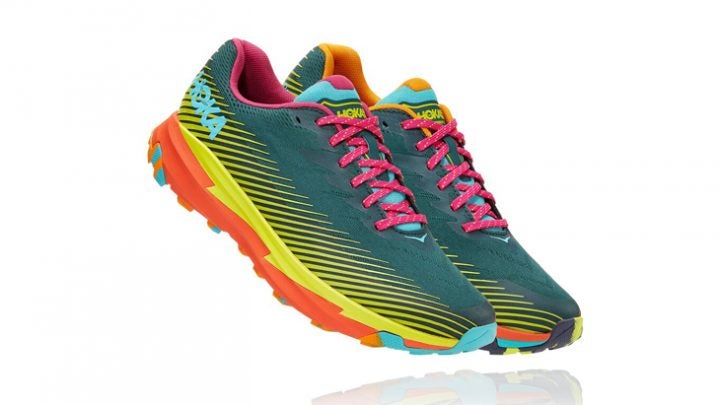
In terms of an excellent trail-specific shoe that still performs on roads, Hoka’s well-loved Torrent 2 is now available in a special Cotopaxi collaboration edition. While we love both brands for their stylish trail gear, the low-profile Torrent 2 has loads of technical features like a super grippy outsole, a mid-cushioned Profile midsole, and trail protection on the upper via a recycled yarn made from post-consumer waste plastic. As far as trail shoes go, the Torrent 2 is on the more nimble and responsive side with a light weight (9.3oz.) and a 5mm drop.
-CF
Polar Grit X
$430, amazon.com
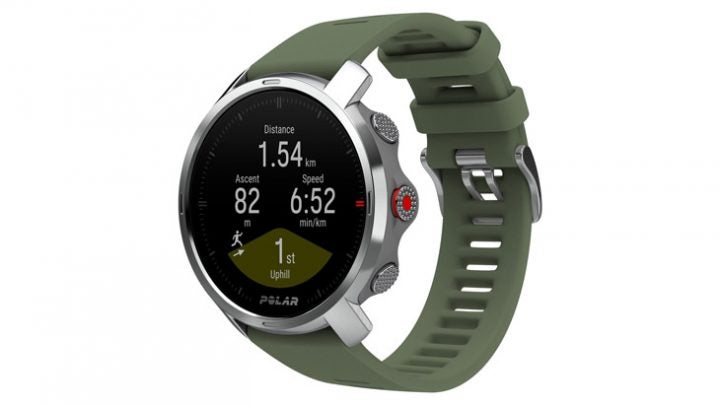
While there are tons of smartwatches out there that work great for trails, the Grit X is one of the few that’s tailored specifically to off-road running. With advanced features like on-wrist running with power (super important for trail runs and workouts), hydration/nutrition reminders, and one of the best rest/recovery systems we’ve tried, the Grit X’s burly design also makes it the perfect choice for the ultimate off-road adventures. Use it in conjunction with off-road-y favorite, Komoot, to help plan your next route with turn-by-turn navigation (no onboard maps, however). Bonus: It also has tri and open-water swimming sport functions as well.
-CF
Patagonia Women’s Ridge Flow Tank
$45, backcountry.com
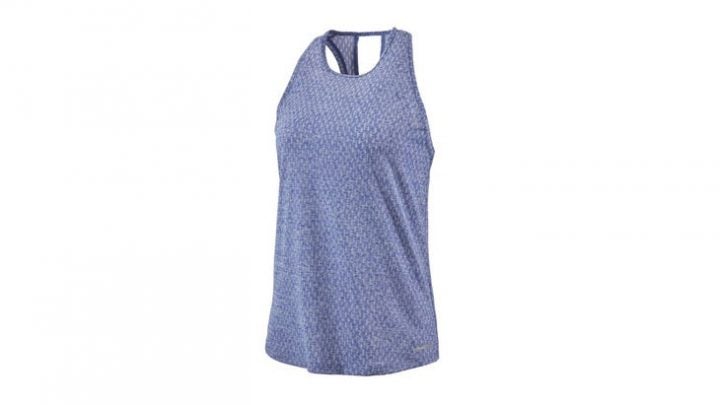
I have this test I like to do with shirts that claim to ward off odor: I run in them three times without washing in-between wears. This tank, made from recycled polyester with an odor-control treatment, stood up to my stink test. (Granted, I live and run in dry Colorado and ran in March, so the sweat-level was relatively low.) Why does odor-control matter more for trail runners than road runners? It’s not that we’re more laundry-adverse. It’s more that we occasionally stay out on all-day mountain runs, or stop to run errands after driving to and running a trail. (Once in a long while, we may run to somewhere, spend the night, and run home.) This tank’s simple yet flattering cut and loose fit around the mid-section remains comfortable all day, to boot.
-LJ
Tracksmith Men’s/Women’s Off Roads Tee
$88, tracksmith.com
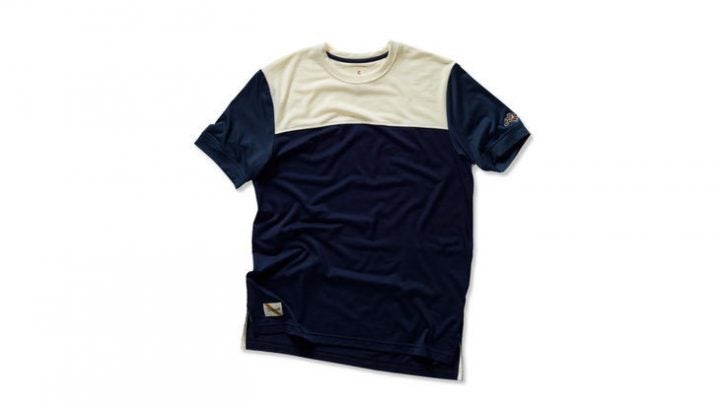
I did the same stink-test with this shirt as I did with the Patagonia Ridge Run tank. While the wool held onto scent (a euphemism, perhaps) more than did the recycled polyester of the Patagonia tank, this shirt still maintained my ability to socialize comfortably after three runs and no washes. Super-soft wool stretches with every arm-swing, and the fact that wool is a natural fiber falls inline with trail running’s nature-loving appeal. The shirt’s cut offers sun protection around the upper chest, and its slim fit allows easy layering for year-round usage. (Note: The wool feels great on cool to cold mornings when staying in pajamas is tempting.)
-LJ
Rabbit Women’s Mountain Climbers 2.0 2.5″ Shorts
$68, runinrabbit.com

Runners tend to take more stuff with them on a trail run than when running roads. These shorts have two mesh side pockets that are open at the top, which means no fussing mid-run to get something out of them or put something in. The pockets are ideal for stashing gels or other small items, and for packing out your trash — or someone else’s. One zippered back pocket holds most phones, and/or securely holds a car or house key. The ability to secure a key is extra-important on a trail run, as you don’t want to return to a trailhead far from home to find you’ve lost your key on miles away on the trail.
-LJ
Men’s Ultimate Direction Hydro Tights
$130, ultimatedirection.com
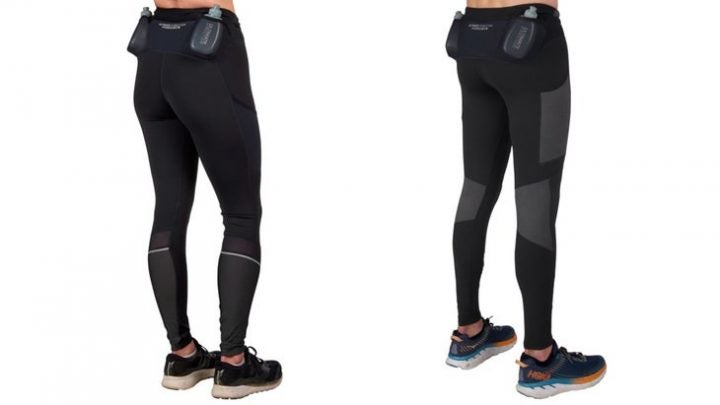
Since trail runners often run hill and dale and back again, it’s nice to have the option to carry water. With the Hydro Tights, that option is built right into the waistbelt. Two pockets site at the outer hip and house a small (10-ounce) water bottle each. The bottles stay put remarkably well, with minimal bouncing, and the ability to wear them as part of the tights eliminates the need for a waistbelt for one less layer of gear. The tights on their own have a compression-quality to them (fitting tighter than most), which offers muscle support.
-LJ
Adventure Medical Kit .3
$8.99, rei.com
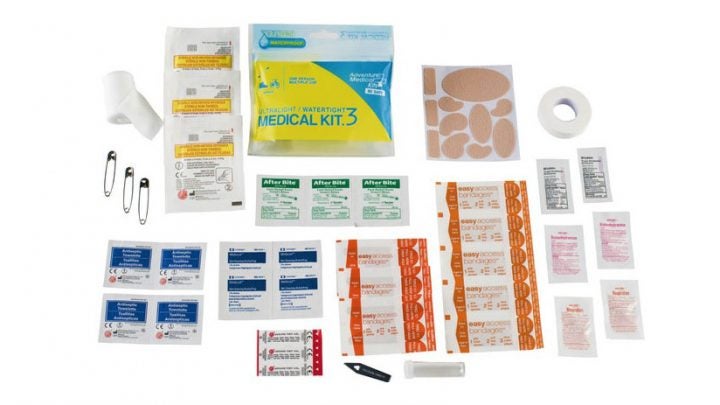
Tossing this super-lightweight (2.3 ounces), pre-packed medical kit into a running pack makes being prepared a no-brainer, especially for longer trail runs in remote locations. The waterproof bag reseals after use, and the kit includes supplies for things like blister-treatment, tick removal, allergic reactions, wound-treatment, and more.
-LJ
Mace Magnum 3 Pepper Gel
$18, amazon.com
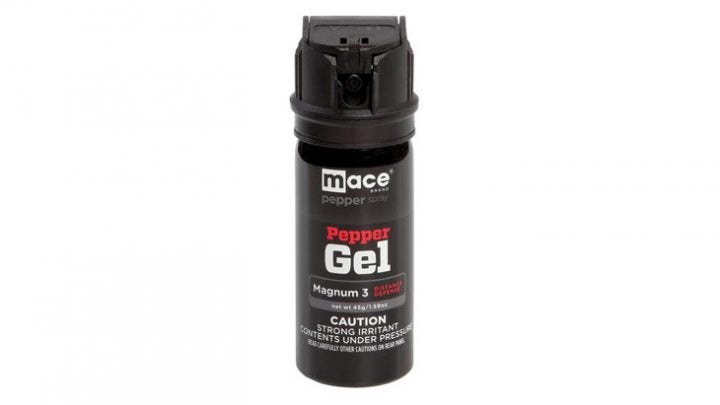
This medium-sized pepper defense canister uses a gel, rather than a spray, to project farther than traditional mace. Not only does it shoot the hottest pepper formula allowed by law (in fact, law enforcement agencies use this model), but it also eliminates blowback—which is huge when you’re outside on the trails in windy areas. The gel has a range of 18 feet and also sticks a UV dye to attackers, making it easier for them to identify and harder for them to wipe off. If you’re interested in something smaller to add to your trail running gear, Mace also makes a new Triple Action Pocket Pepper Spray ($16, amazon.com).
-CF
